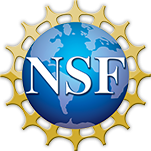Abstract
Microbial life inhabits deeply buried marine sediments, but the extent of this vast ecosystem remains poorly constrained. Here we provide evidence for the existence of microbial communities in ~40° to 60°C sediment associated with lignite coal beds at ~1.5 to 2.5 km below the seafloor in the Pacific Ocean off Japan. Microbial methanogenesis was indicated by the isotopic compositions of methane and carbon dioxide, biomarkers, cultivation data, and gas compositions. Concentrations of indigenous microbial cells below 1.5 km ranged from <10 to ~104 cells cm−3. Peak concentrations occurred in lignite layers, where communities differed markedly from shallower subseafloor communities and instead resembled organotrophic communities in forest soils. This suggests that terrigenous sediments retain indigenous community members tens of millions of years after burial in the seabed.

